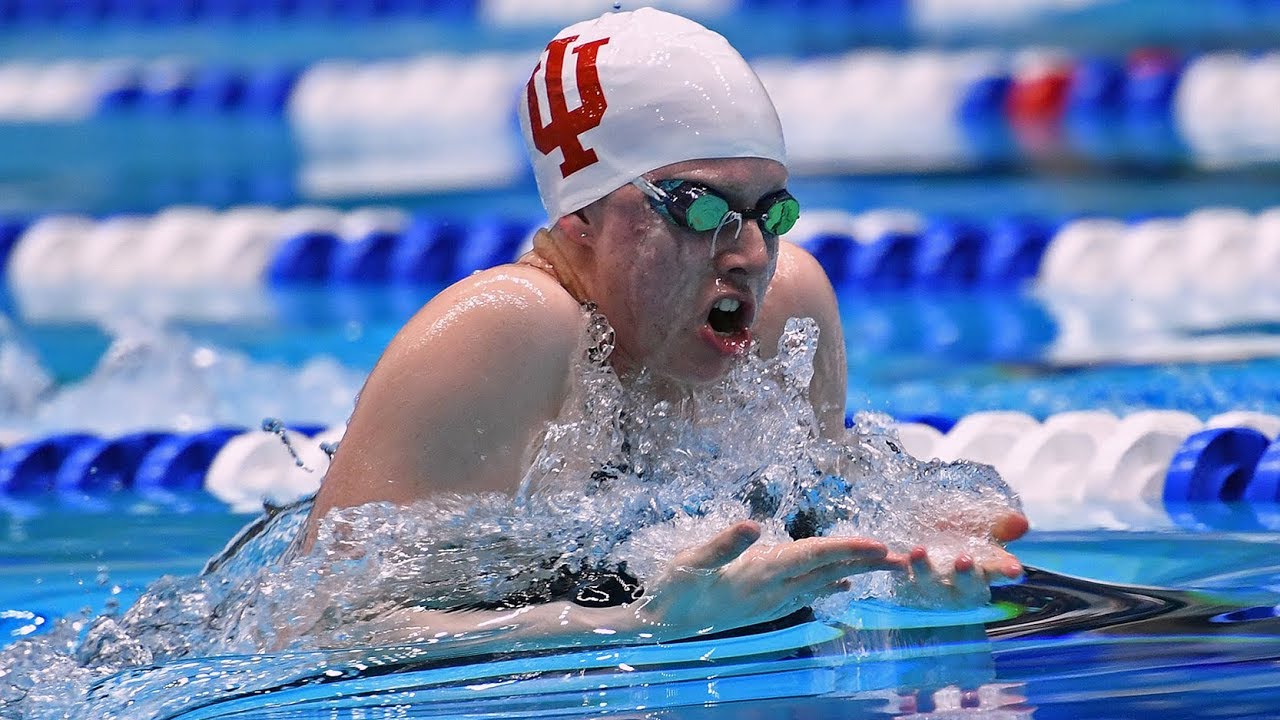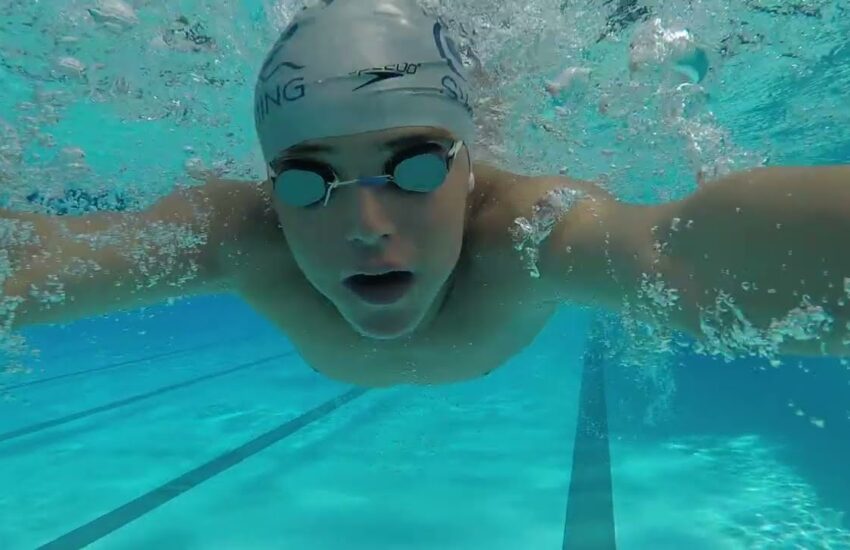How to swim breaststroke?
The breaststroke is an advanced stroke that requires patience and commitment. The breaststroke is often referred to as the “frog stroke” because it requires proper timing and commitment. This swim stroke is characterized by dipping and coiling of the body rather than side to side rotation. The arms then explode forward. In the beginning, you should practice the frog stroke in a pool to learn how to swim breaststroke. Once you have mastered this stroke, you can improve your speed by working on these basic techniques.
Time your arm action and kick
In swimming breaststroke, you should time your arm action and kick to the right degree. This allows you to maintain the proper body alignment and streamlined position. Your legs should recover fast while your arms are moving forward. The flutter kick helps you maintain the correct timing of your arm action. It works like a metronome, allowing you to focus on your arm stroke. It should be quick, powerful, and in perfect line.
Timing your arm action and kick is also critical to mastering the stroke. You must ensure that your legs and arms move together in sync throughout the entire stroke. Your kick should be timed to finish just before your arm strokes are at their full length. In addition, you should always keep your feet close to your hips. Practicing the correct timing of your arm action and kick will allow you to master the swimming breaststroke and become a more efficient swimmer.
To perfect the technique, you must practice reaching the other end of the pool. Focus on holding a still position while you execute arm strokes. Try to get from zero to sixty in three or four kicks. Remember to watch the center of the pool for water well-up during the insweep. If you aren’t able to achieve this, you need to work on strengthening your hamstrings.
Once you’re confident with your technique, try swimming the breaststroke in synchronized sets. Try to avoid overlapping arms, and try to keep your hands close together throughout each phase. If you can manage both, swimming breaststroke will be a breeze. It is possible to practice different arm actions and kick sequences. This way, you can be confident in your technique and swim breaststroke at the highest level.
Work on your glide
To improve your breaststroke, you’ll want to work on your glide. The right glide means keeping your head down in the water while extending your arms out in front of you. Your body will move more efficiently through the water when it is narrow and streamlined. The correct timing is also very important. Work on your glide whenever you practice swimming breaststroke. Here are a few helpful tips to improve your glide:
The glide length can vary from a few seconds to two seconds depending on the style of stroke, event, and distance. A large part of the glide length depends on when your stroke begins to lose speed. For example, a 100m breaststroke event has a stroke rate between 1.0 and 1.2 seconds, and a 200m field is generally somewhere between 1.6 and 1.8 seconds. Whether your glide is short or long depends on your ability to judge the time.
You can use a mid-swim glide drill to gauge your balance, posture, and line. The aim is to make your arms’skate’ across the surface of the water rather than going into it. Using too much arm length will make it difficult to maintain balance, and you’ll end up going too high, causing your arms to recover too quickly and swimming a greater distance. Performing a mid-swim glide drill is also a great way to gauge your balance.
Another important component to working on your glide is the speed with which you pull back. The more efficient your glide is, the more distance you can achieve per stroke. Remember to be patient during your glide to improve your speed. You’ll be rewarded for your efforts! If you’re not getting enough distance, you’ll lose the race. During the glide, you should be able to catch as much water as possible, which will make your finish time more efficient and less time-consuming.
Maintain a streamlined posture
To be able to swim breaststroke efficiently, you need to focus on the right posture. Once you breathe in, try to get into the streamlined position as quickly as possible. Once you are in the streamline, try to maintain your position during the glide. Be sure to keep your head and shoulders in line with each other and your eyes looking down. Try to maintain a small hole in the water during the glide, but don’t stay in it for too long.
To maintain a streamlined posture while swimming breaststroke, the first thing you need to do is align your shoulders and head correctly. Your shoulders should shrug to narrow your upper body width, and your head should rest in a line with your spine. Then, hinge your neck from your hips to keep your neck in a natural position. This will help you swim faster. It is important to maintain a streamlined posture, as this will help protect your neck.
The second thing you need to do is align your shoulders and elbows. Make sure that you align the two of them as closely as possible. You can also align your wrists and shoulders forward. Try to maintain a firm spine. Then, lower your chest before reaching the streamline. This will shift your weight forward. You want to reach your streamlined position before the arms reach the corner of the outsweep.
A good technique to maintain when swimming the breaststroke is to make sure you have a straight back. This will help you avoid additional drag during the stroke. Your legs should also be straight. By doing this, you’ll be able to keep a smooth and relaxed posture throughout your swim session. It is important to remember that the length of your back determines the amount of resistance you will experience in the water.
Avoid common pitfalls
As a swim instructor, you know how challenging the breaststroke is on your cervical spine and lower back. One of the most common mistakes you may make is using poor technique. Start your glide by raising your head, breathe, and extend your arms forward. Make sure your hips are high. This will keep your body on the surface of the water while you jet forward. If your hips are too low, your body will sink into the water.
When performing the pull during the breaststroke, pay close attention to your hip position. Your hips must be parallel to the surface of the water. Your legs should be behind you at all times. Practice doing breaststroke in a straight line while focusing on your hip position. This will make you more effective. Here are some tips for avoiding common breaststroke mistakes:
Mistake #2: Not rotating your body as you entered the water. This shortens your stroke and makes it hard to breathe properly. Not only is this bad for your stroke technique, but it can cause shoulder injuries as well. Also, it is important to keep your head still and relax during the swim. Moving your head around can also make it hard to execute powerful kicks. So avoid this mistake! By following these tips, you will improve your breaststroke technique and stay injury-free!
Kicking your legs too wide. Most swimmers make this mistake because they attempt to scoop up as much water as possible. Instead, you should train your legs to kick more efficiently. A good way to do this is by pointing your knees outward toward the lane ropes. By changing your kick angle, you can improve your swimming. It will also help you improve your breathing. If you’re breathing too hard with your legs, you will sink and end up pushing water into yourself.
Improve your speed
One of the most difficult competitive swimming disciplines is the breaststroke. It’s a very challenging stroke and takes lots of practice to master. But, there are ways to improve your speed when swimming breaststroke. In this article, we’ll discuss several techniques that will increase your speed while swimming this discipline. You should also make sure that your body is in a neutral position, with your head pointed downward. It’s also important that you keep your hips low and back straight to make yourself more streamlined.
One of the most common mistakes new swimmers make when learning the breaststroke is pulling out their arms wider than their body. This makes it difficult to maintain a good body position. The most powerful breaststroke pull comes from keeping the arms tight to the body. When you pull water into your chest with your arms, try to keep your elbows tucked tightly. This will give you a stronger pull. And if you don’t do this, you might end up slowing down.
Whether you want to increase your speed while swimming the breaststroke or any other swimming stroke, making sure you have good technique is critical. It will increase your speed and allow you to swim longer distances and for longer periods of time. If you’re a beginner, you should start slowly and focus on perfecting your technique. By doing this, you’ll be able to maintain good technique while swimming at high speed and save energy.
Another important technique to improve your speed is to strengthen your shoulder muscles. The shoulder muscles are crucial to moving through the water. They play a crucial role in making your body go as fast as possible. You can strengthen your shoulder muscles by performing exercises that target them. Developing these muscles will improve your butterfly stroke speed. You should aim to make the arm you use during your stroke pointing upwards as far as you can. Once you’ve improved your shoulder strength, you can focus on other techniques to increase your speed in the breaststroke.


